In Pictures: The women soldiers of Myanmar's resistance
From doctors and teachers to homemakers, hundreds feel compelled to join cause
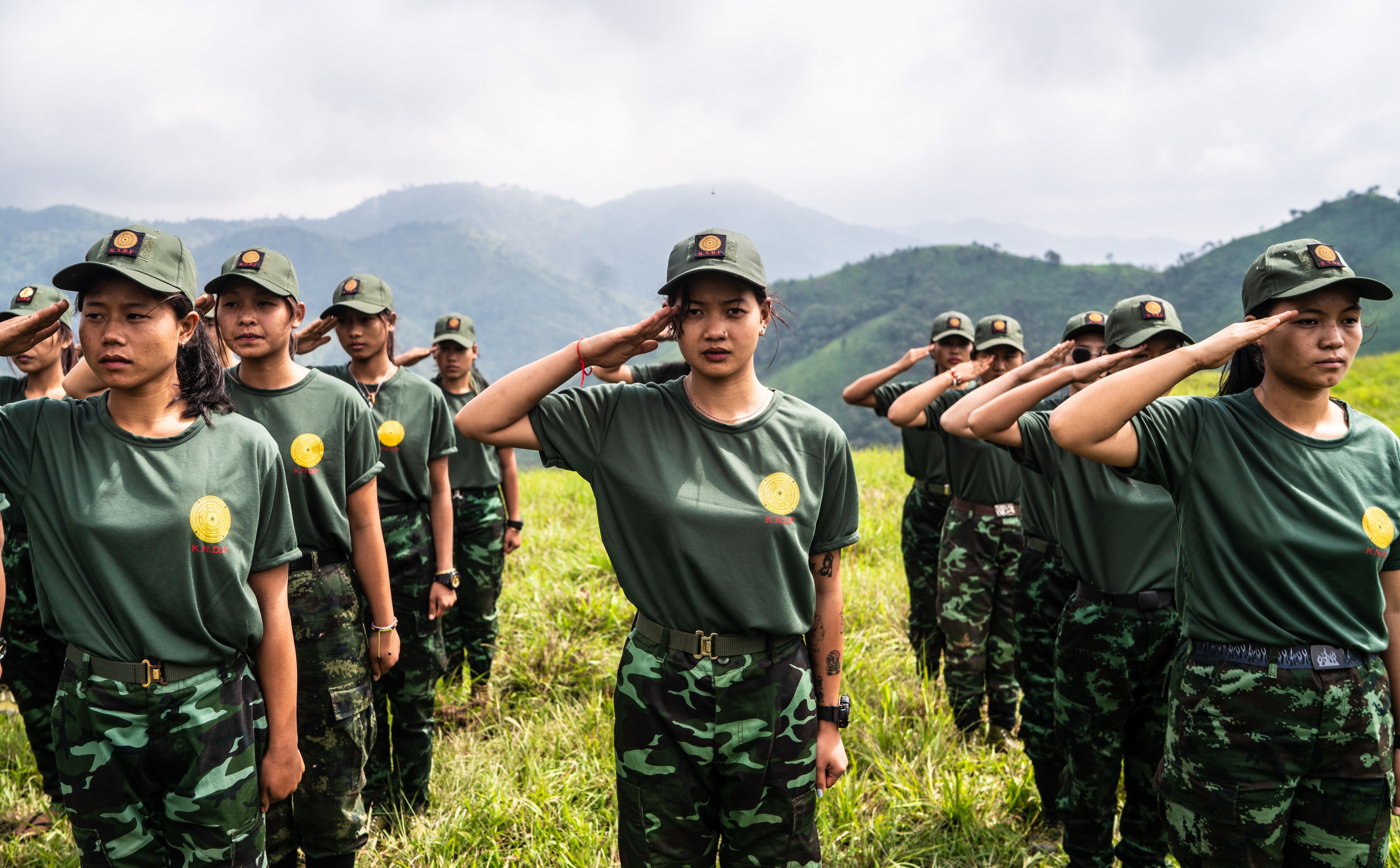
Angelic Moe, 26, may strike some as an unusual resistance fighter. The one-time schoolteacher left her classroom to become a unit battery commander in the Karenni Nationalities Defense Force (KNDF), a leading anti-military resistance group based in eastern Myanmar's Kayah state.
"Yes, I have been to the front line several times," she said. "I remember one moment of my experience in battle. ... I was just 50 meters away from the [military forces]. Our fighters noticed them and shot them. If they hadn't noticed them, we surely would have all died."
The KNDF is one of the most powerful anti-regime forces, formed after the Myanmar military seized power in February 2021. It is composed mostly of local youth and operates along with the Karenni Army, one of a number of ethnic rebel groups in Myanmar.
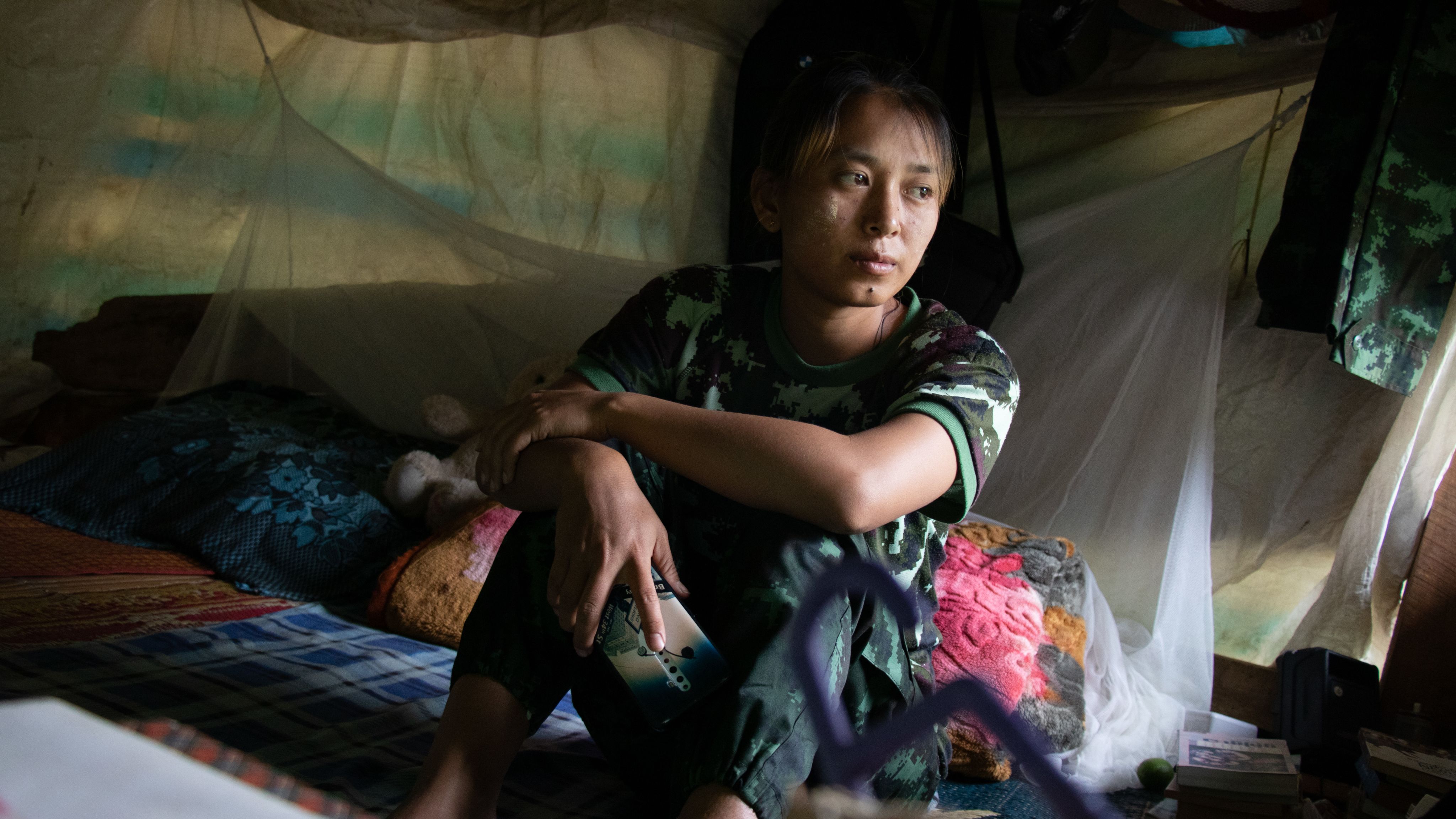
Cmdr. Angelic Moe, 26, was made a unit battery commander in the Karenni Nationalities Defense Force (KNDF). Previously she was a teacher.
Cmdr. Angelic Moe, 26, was made a unit battery commander in the Karenni Nationalities Defense Force (KNDF). Previously she was a teacher.
Before the military takeover, Moe had been working at a public school for five years and never imagined that she would have to hold a gun. "At that time, I didn't know what the consequence of it would be," she recalled. "My grandparents told me what could happen." But she decided to take part in protests and the civil disobedience movement, staying away from her job with schools now controlled by the military regime.
The military answered its opponents with harsher repression. According to the Assistance Association for Political Prisoners, more than 4,200 civilians have been killed since the takeover, and nearly 20,000 are still in detention.
Moe was initially reluctant to join the armed resistance, and refused calls from her friends to do so. She continued teaching children who were forced to leave their homes as fighting and airstrikes intensified. But as causalities mounted, she eventually changed her mind about picking up a weapon herself.
Many young women have done the same. Their backgrounds are varied -- doctors and nurses, teachers, housewives, salespeople, government employees. The KNDF says it has around 600 female fighters.
In May 2022, the KNDF established a "women's unit" to highlight their participation in the struggle against the military. "It was the hardest time ever in my entire life," Moe said of her weeklong training before becoming commander -- a grueling test of mettle she had never experienced in her life as a teacher.
Not all the women recruits are fighting at the front. Some are assigned to other areas and types of duty, such as guarding outposts and checkpoints. Still others perform supporting tasks such as fundraising and administrative services.
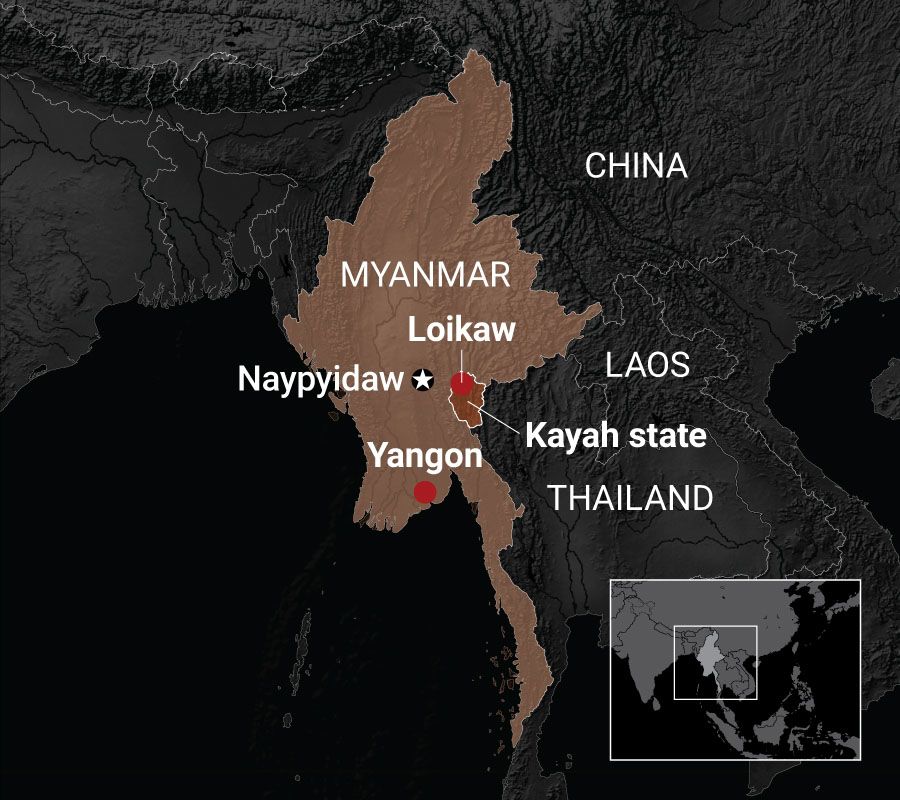
Some do not want to handle weapons. Still, they help the resistance in different ways, motivated by suffering under the military regime.
But as a female unit commander, Moe has worked to reach equal footing with male fighters. "When I go to the front line, I do not want my male comrades to see me as a burden," she said.
Fighters also have to pay their own living expenses. Although Moe said she receives monthly stipends from the battalion, she also does side jobs when not on duty, such as sewing uniforms, to make extra money. Sometimes she has to ask her parents to supplement her income. Most of the other members do the same, she said.
Many families that fled their homes due to fighting remain internally displaced. Moe's colleagues from those families "mostly had to do more extra work to get enough money," Moe said.
"We are not only fighting against the military regime, we are fighting for women's rights. Currently the KNDF is giving more status and rights to the women who take part. So, after this revolution, I will continue to fight and stand up for women's rights."
"Berry" is a pseudonym. For security reasons, the identity of the writer has been concealed.
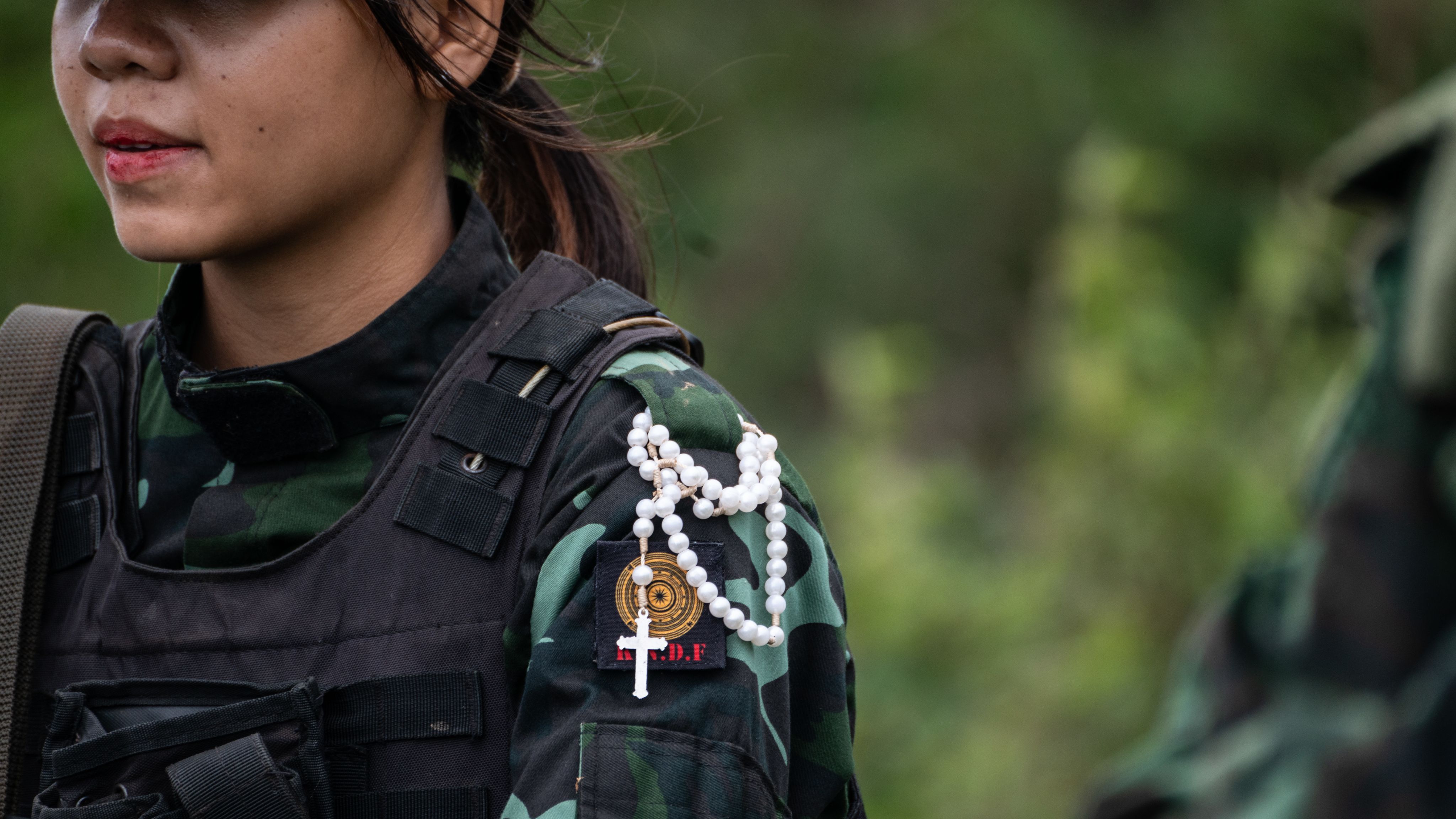
A soldier wears a cross on her shoulder. Most KNDF soldiers are Christians.
A soldier wears a cross on her shoulder. Most KNDF soldiers are Christians.
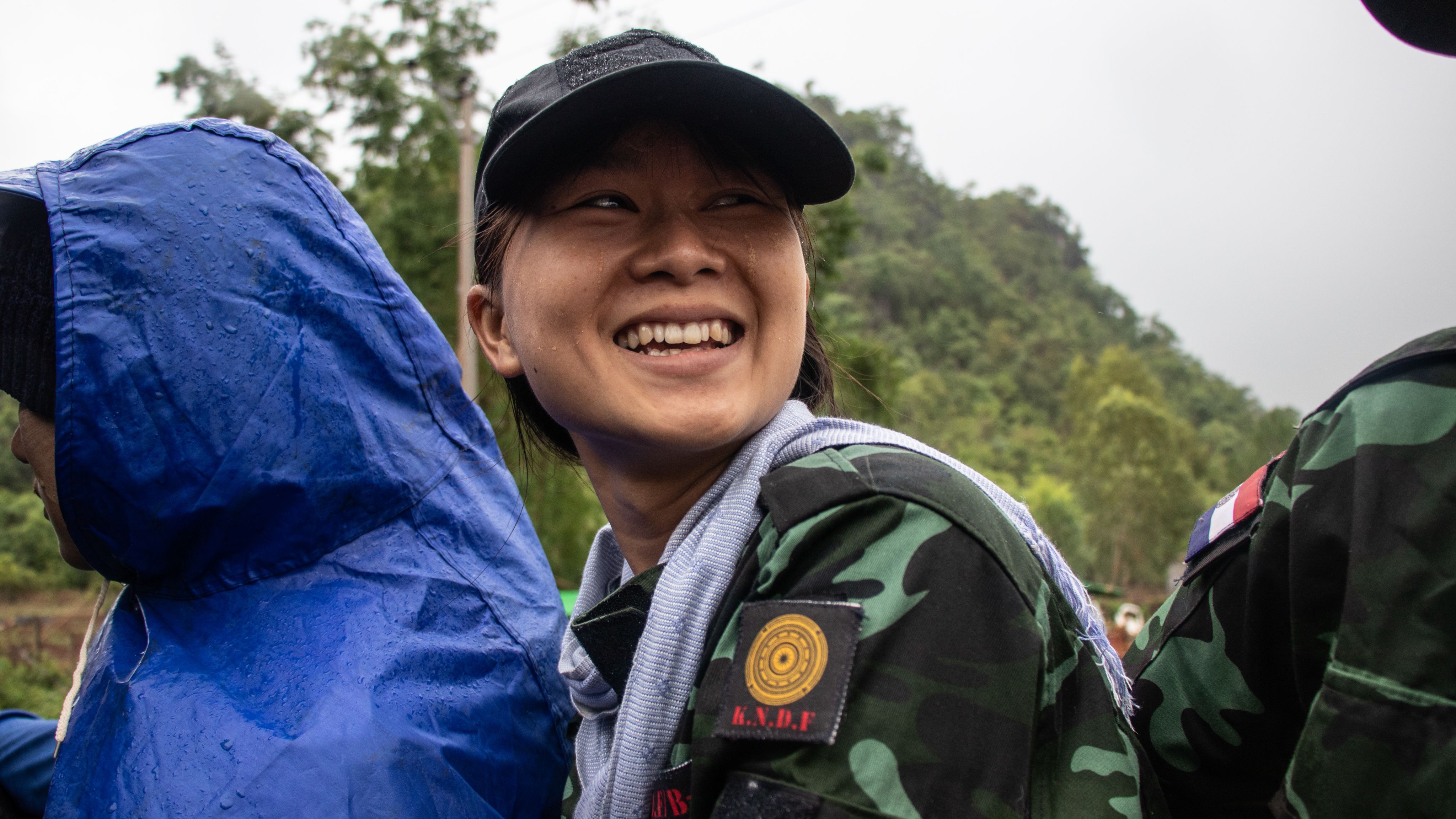
A soldier smiles on her way to training.
A soldier smiles on her way to training.
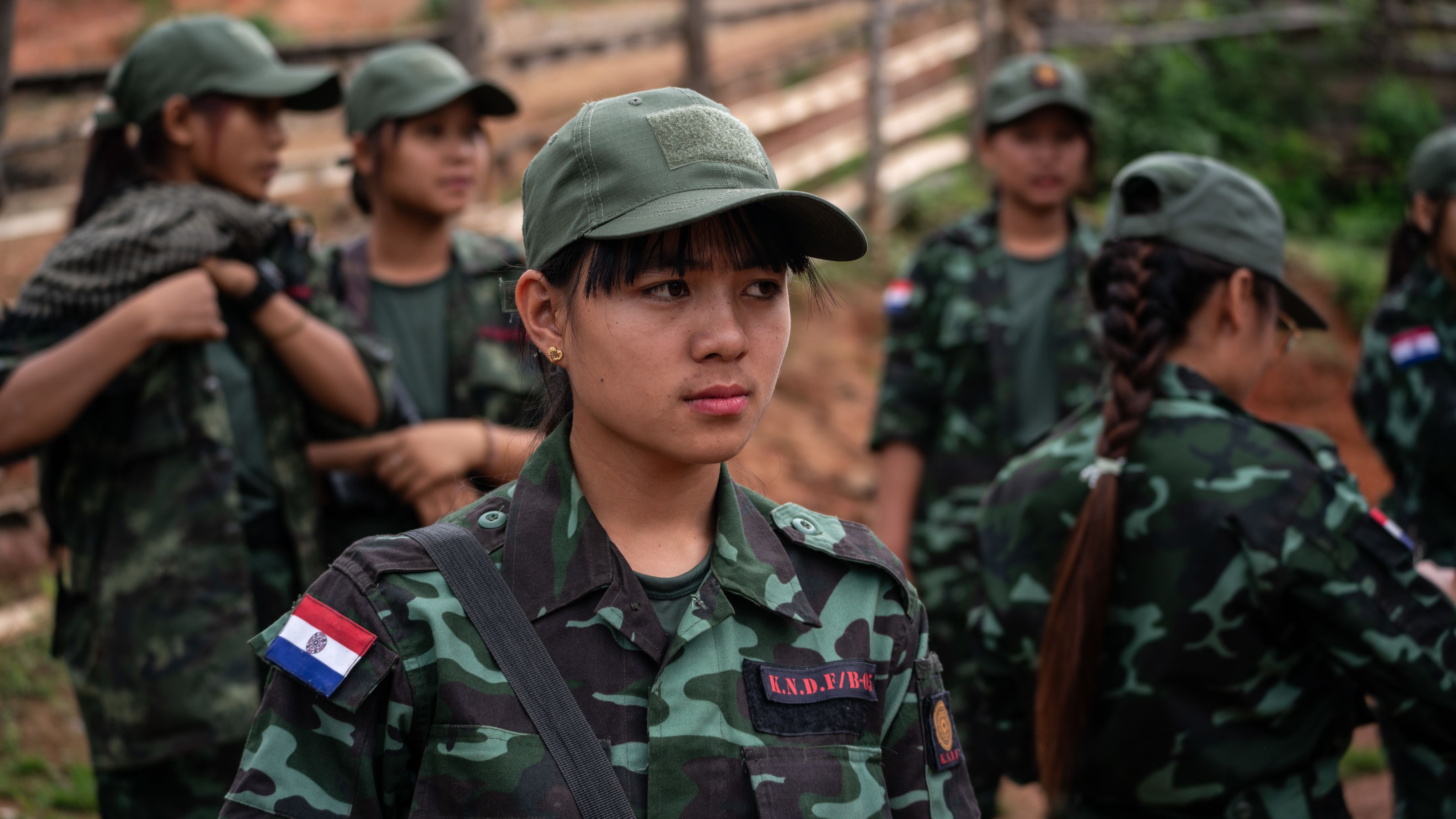
Women soldiers from different villages in Kayah state gather for training.
Women soldiers from different villages in Kayah state gather for training.
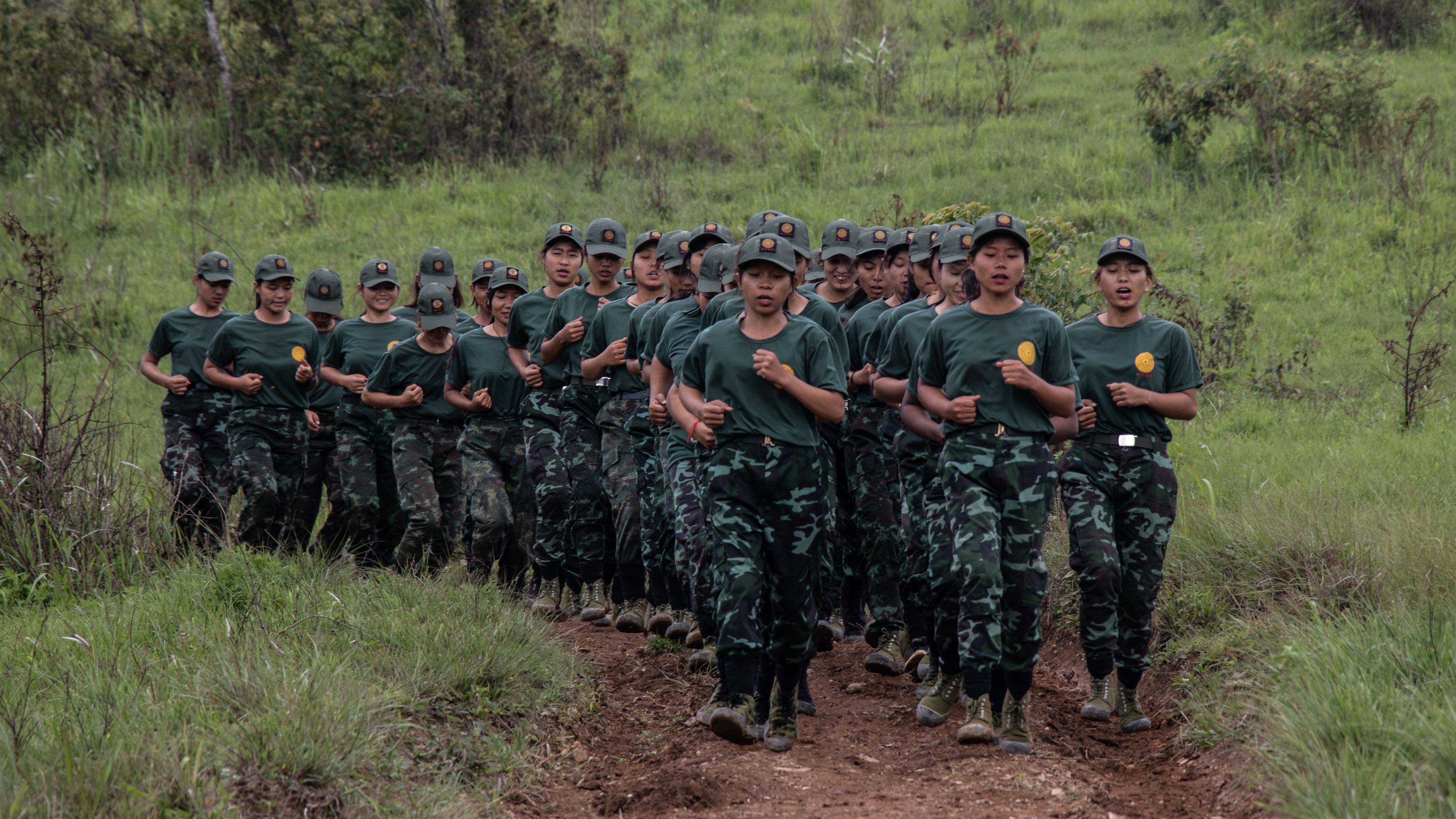
Soldiers run for about 300 meters to warm up at the start of training in the mountains.
Soldiers run for about 300 meters to warm up at the start of training in the mountains.
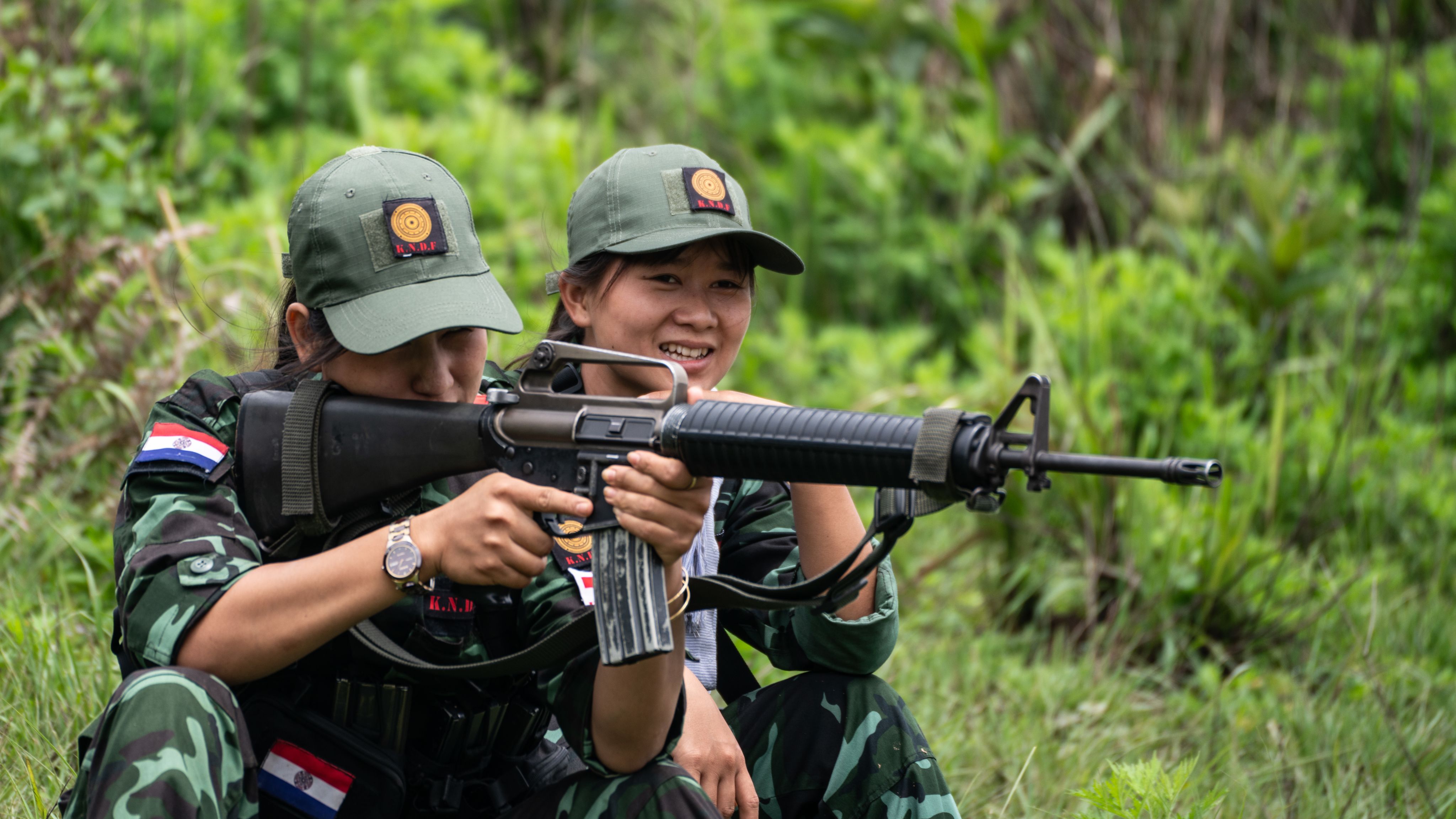
A soldier takes target practice during a training session. Women in the KNDF serve in variety of roles, from front-line soldiers to medical personnel.
A soldier takes target practice during a training session. Women in the KNDF serve in variety of roles, from front-line soldiers to medical personnel.
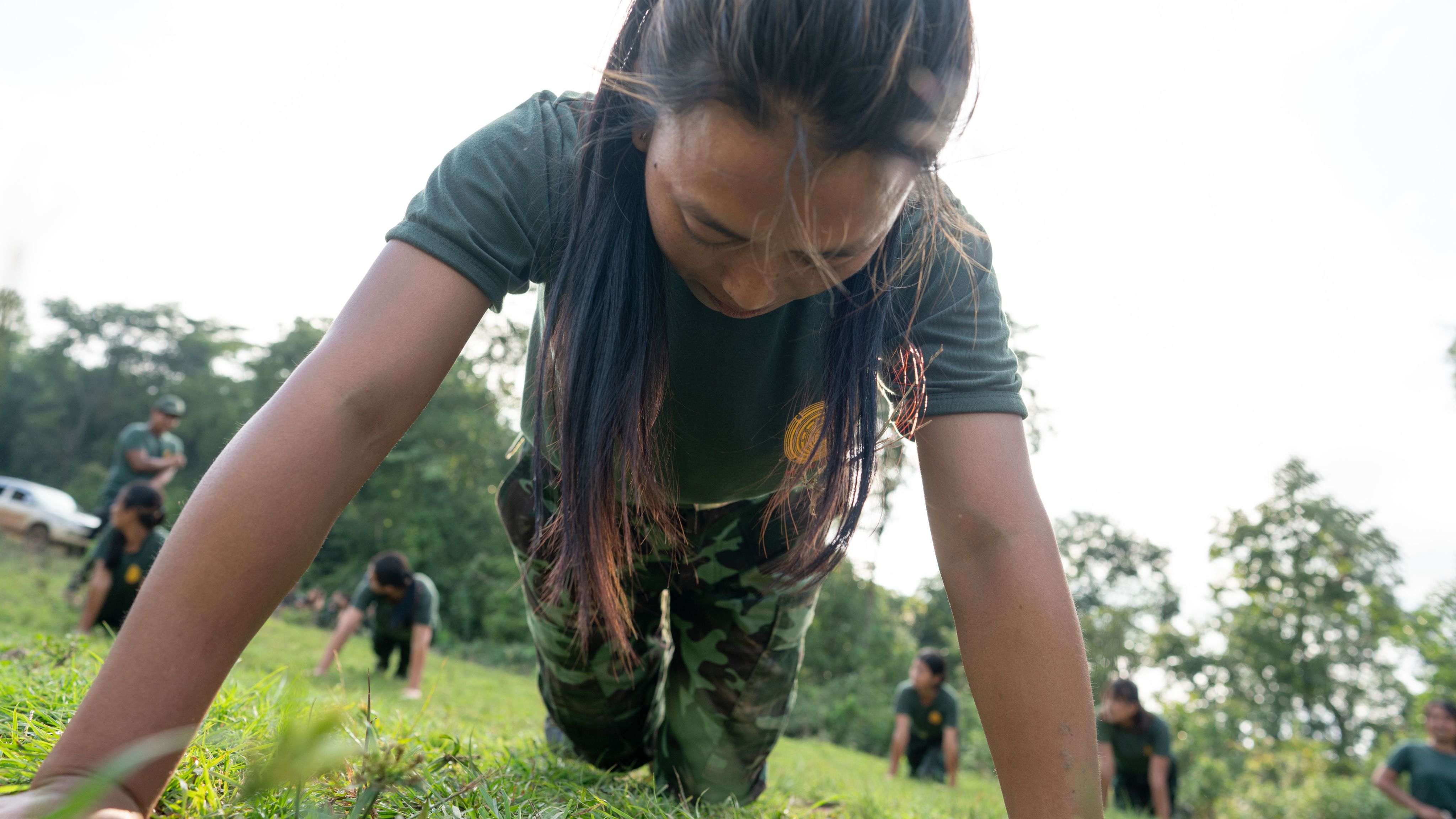
Moe does push-ups during training.
Moe does push-ups during training.
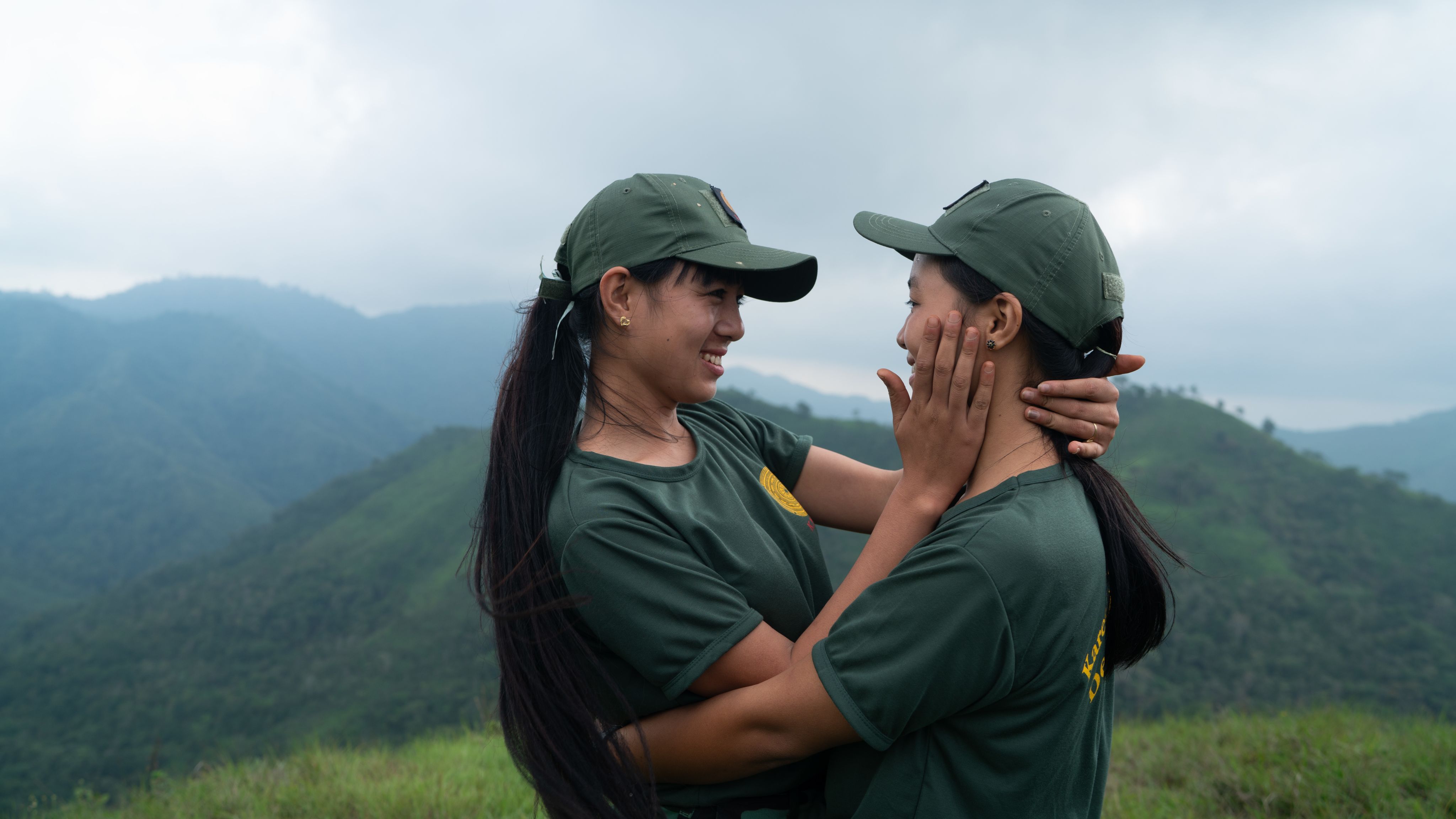
Nge Nge, left, and her partner embrace each other during a training session. They have been living together in a tiny shelter.
Nge Nge, left, and her partner embrace each other during a training session. They have been living together in a tiny shelter.
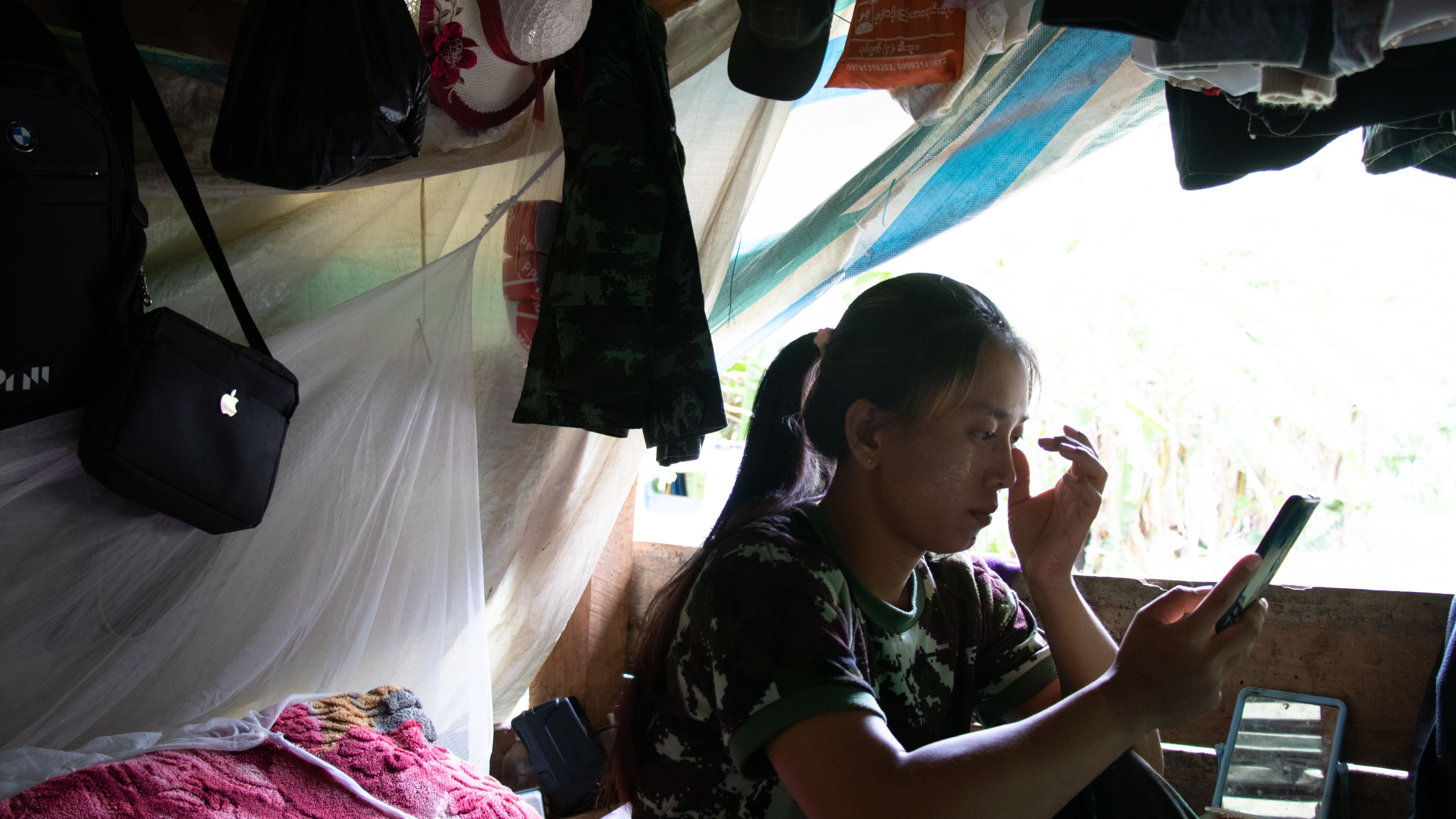
Moe checks the news on her phone in her living quarters after going off duty.
Moe checks the news on her phone in her living quarters after going off duty.
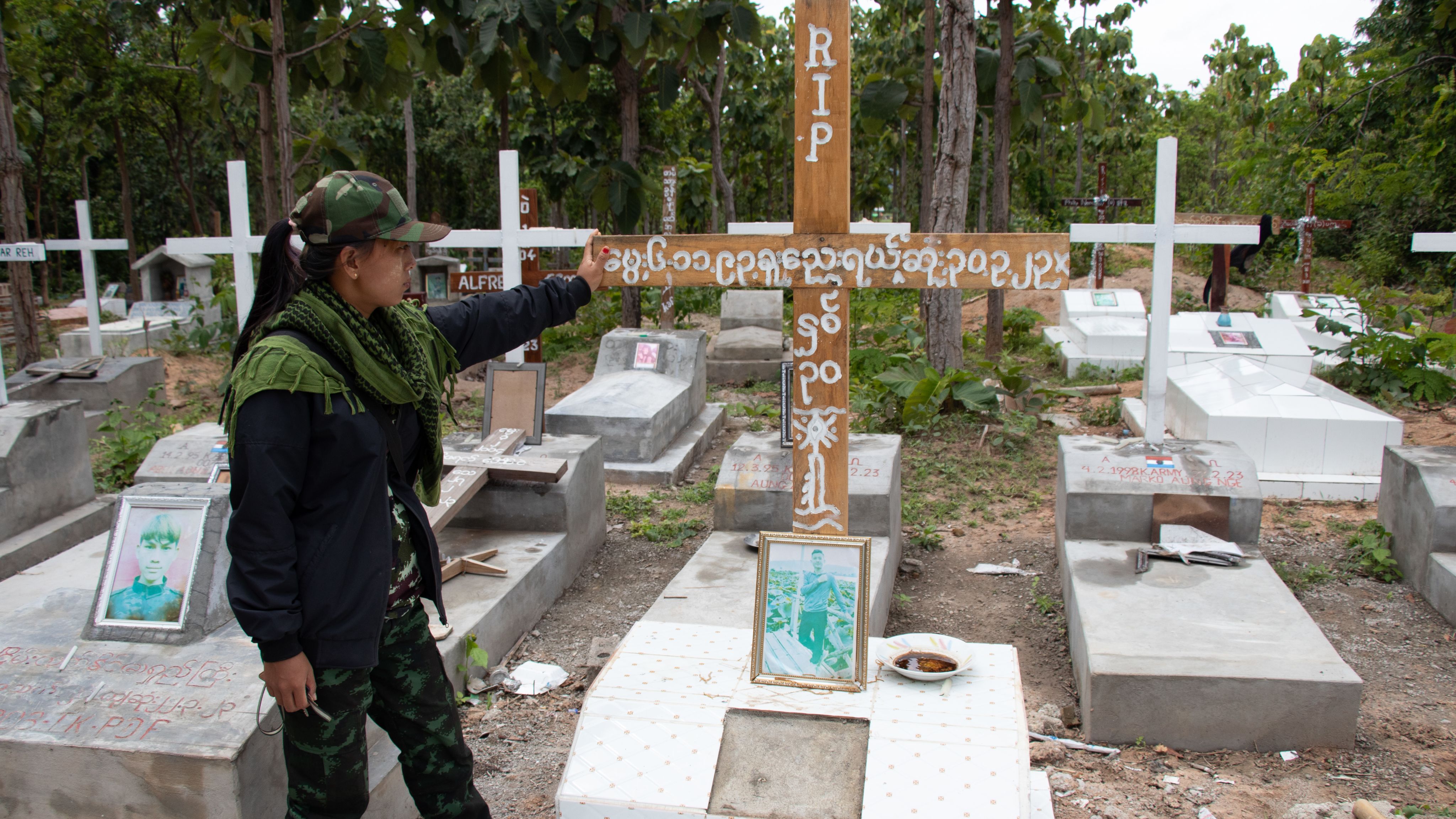
Moe visits a cemetery and touches the grave marker of a friend killed by the Myanmar military.
Moe visits a cemetery and touches the grave marker of a friend killed by the Myanmar military.
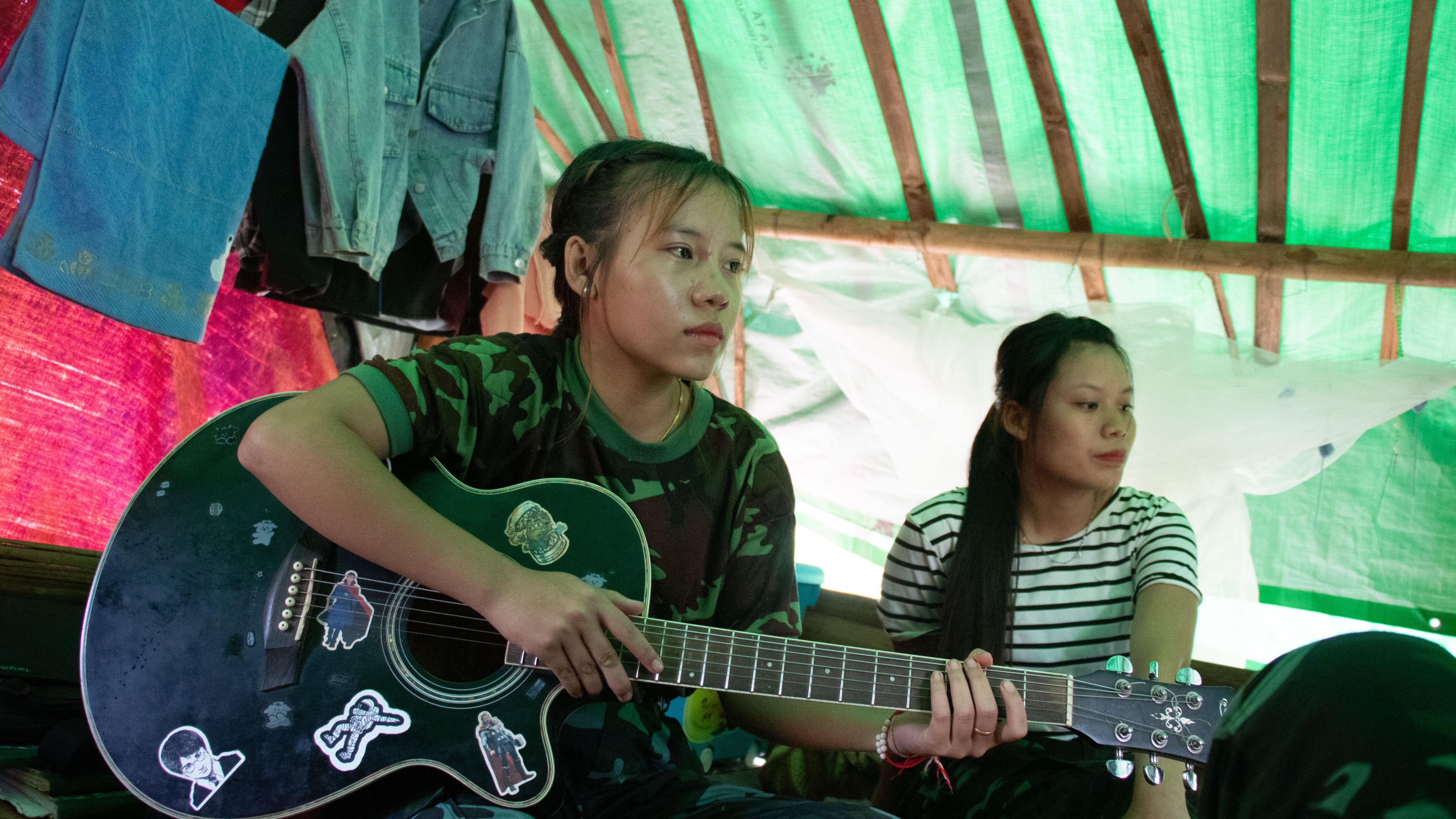
A soldier plays the guitar and sings a song she wrote with a colleague.
A soldier plays the guitar and sings a song she wrote with a colleague.
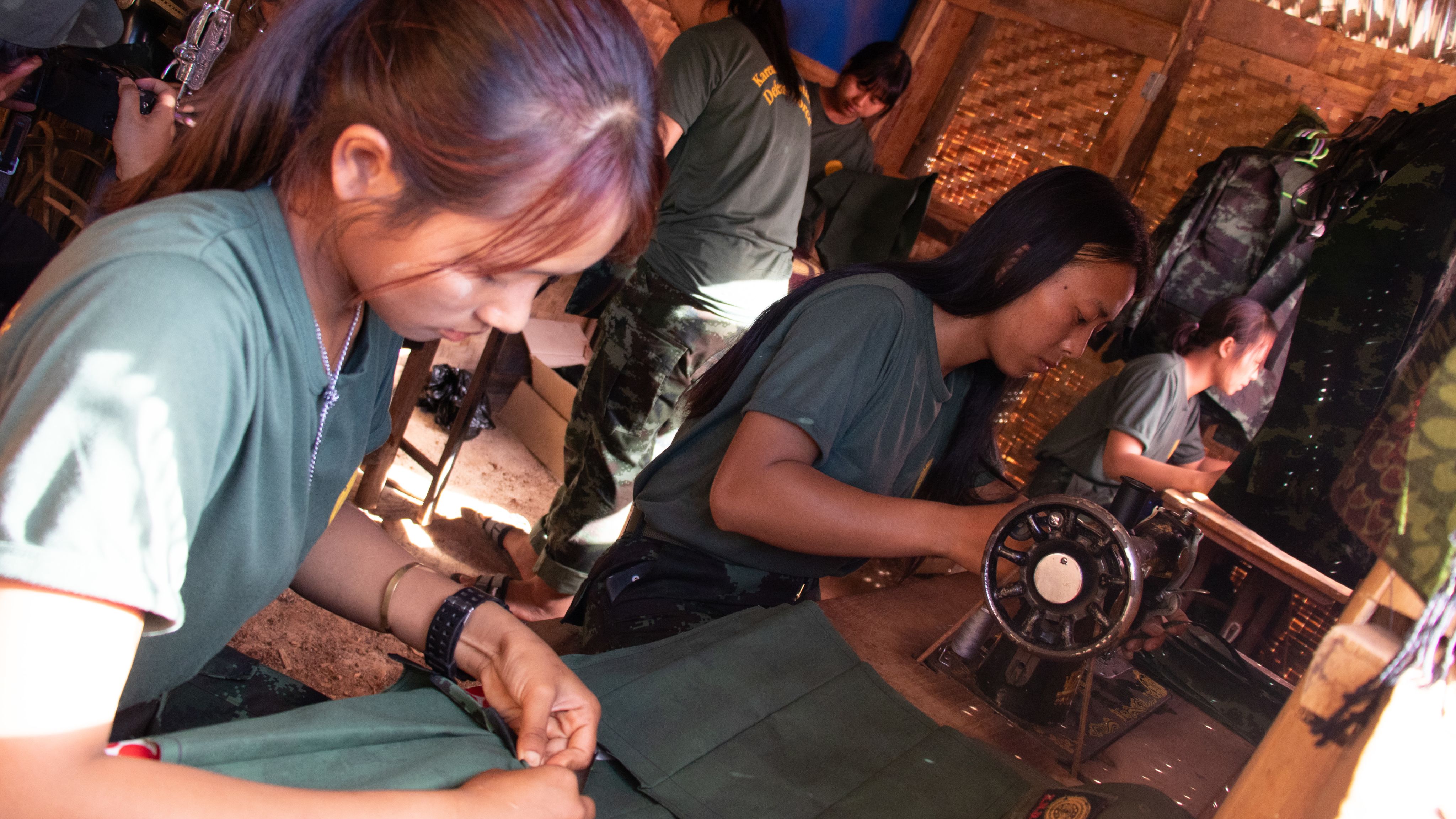
Soldiers make their own uniforms using old sewing machines. They also do sewing jobs to earn extra money.
Soldiers make their own uniforms using old sewing machines. They also do sewing jobs to earn extra money.
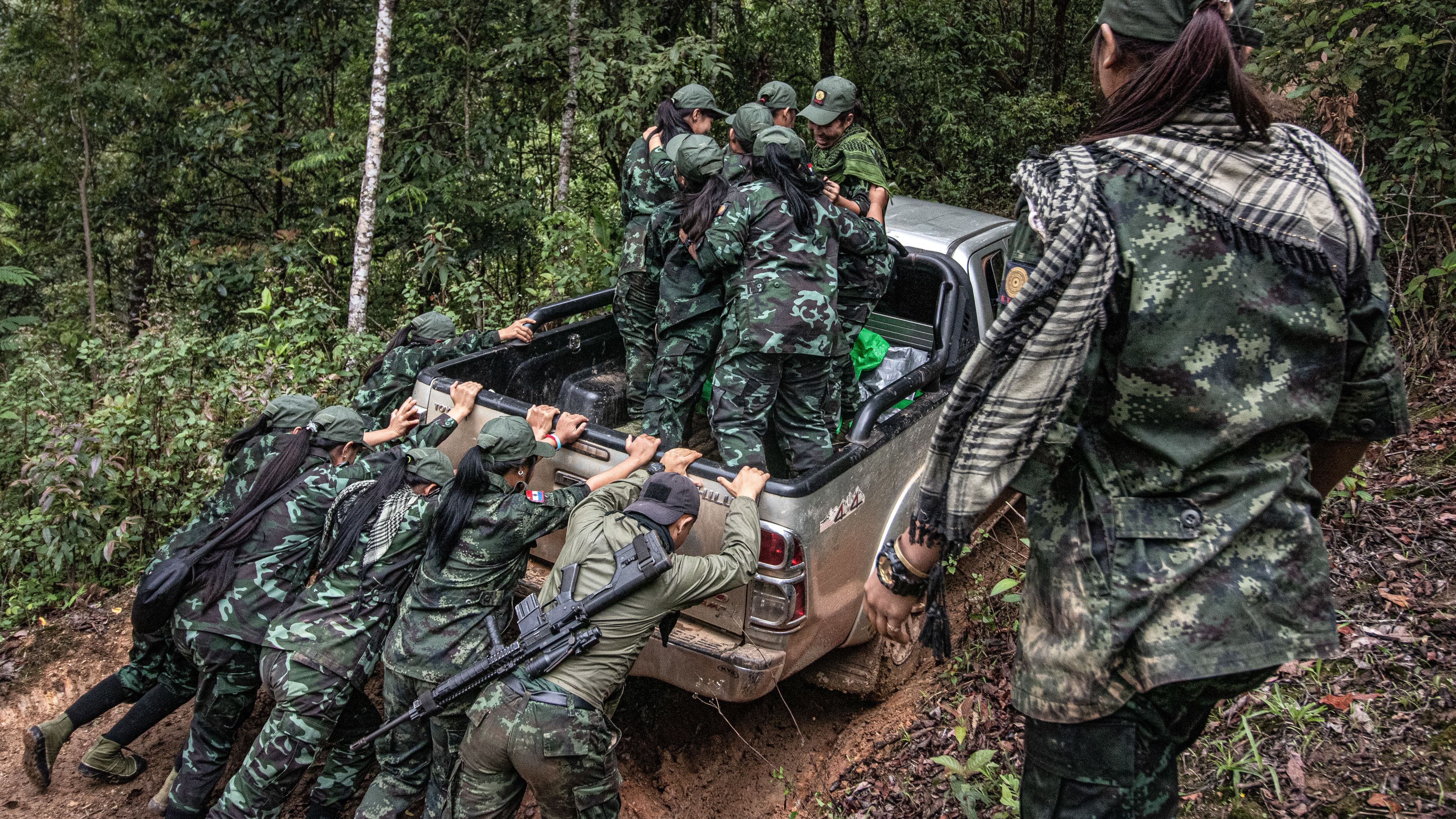
Soldiers work to free their truck from the mud after a heavy rain.
Soldiers work to free their truck from the mud after a heavy rain.
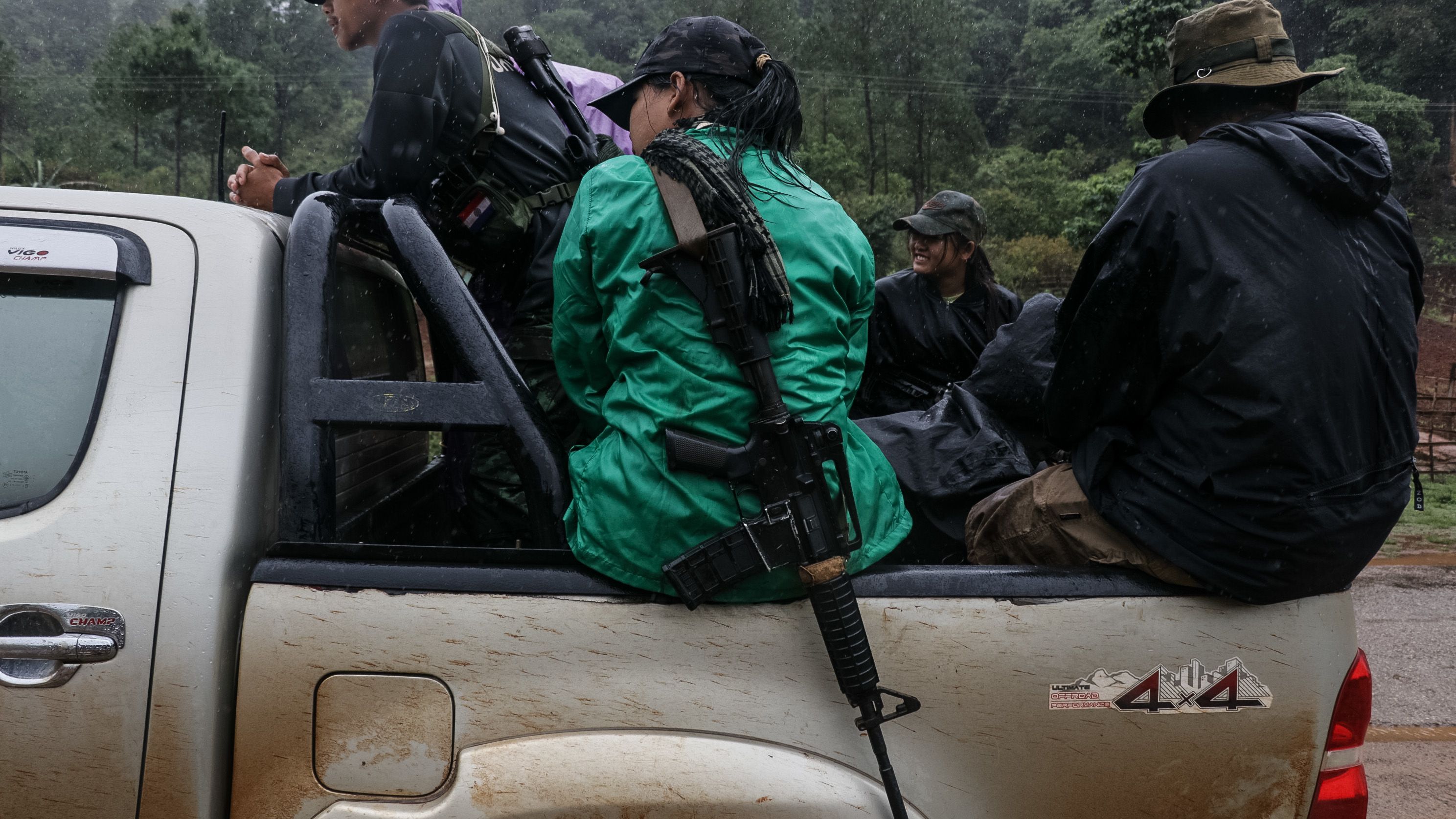
A woman rides in a truck with a rifle slung on her back. Guns and bullets are paid for entirely by private support groups.
A woman rides in a truck with a rifle slung on her back. Guns and bullets are paid for entirely by private support groups.
Editor: Yuichi Nitta, James Hand-Cukierman
Photo editor: Ken Kobayashi
Graphics: Hidechika Nishijima
